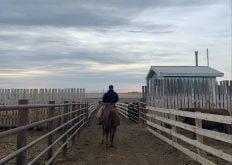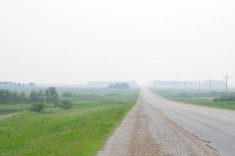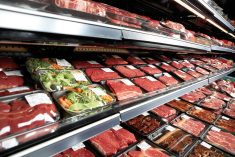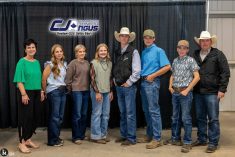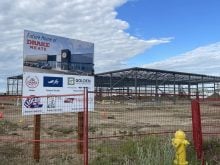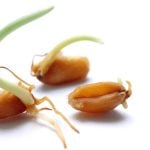When you can’t find the solution you need, sometimes you have to build it yourself.
This was true for Ryan Sommerfeld, who took it upon himself to create the haying solution needed for his operation’s wet conditions, resulting in a promising innovation.
“Where we live, we have heavy dews and frequent rains, and we often grow really good crops, so we always have struggled to dry down our hay and green feed crops,” says Sommerfeld, who runs 230 head of purebred Gelbvieh females at his operation near Medstead, Saskatchewan, east of Lloydminster. He hays about 900-1,000 acres each year, as well as a few hundred acres of greenfeed.
Read Also
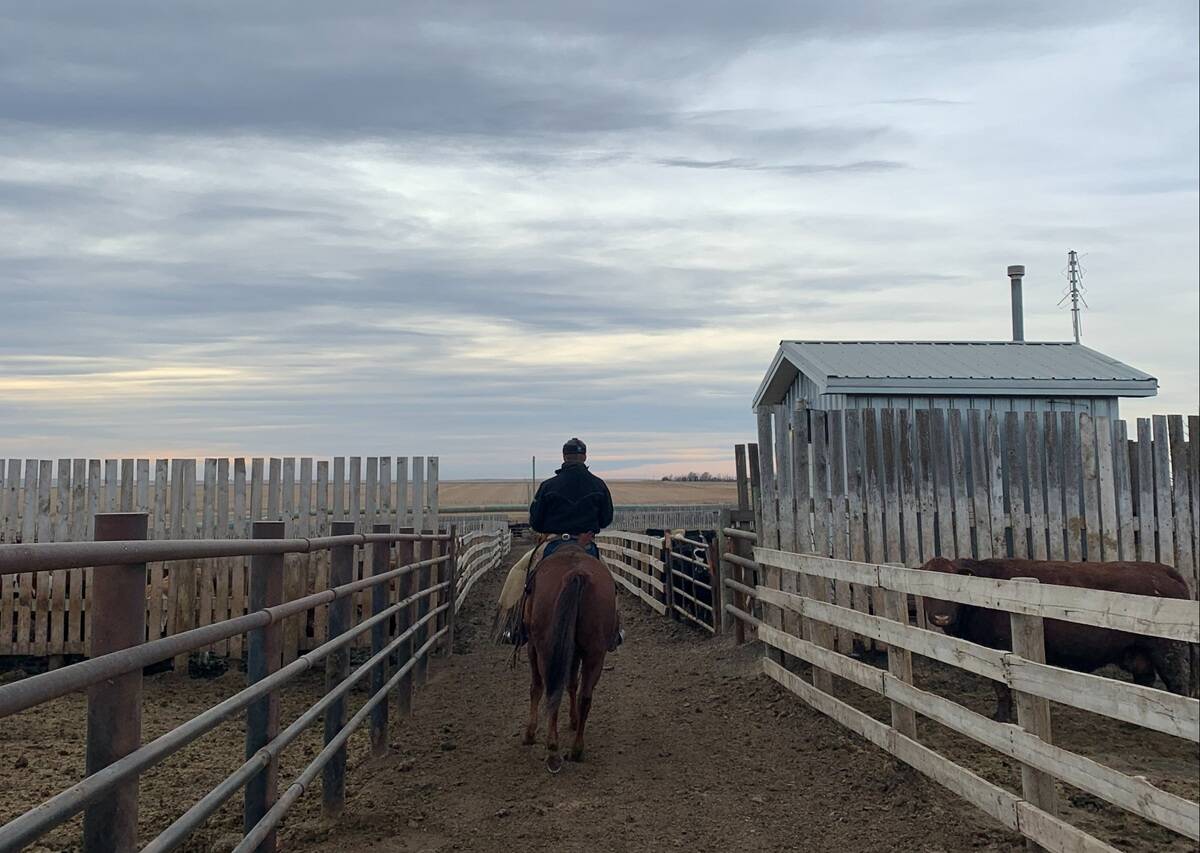
Pen riders still better than tech at detecting respiratory disease in feedlot cattle, says researcher
Recent research found that pen riders are better than tech at flagging signs of BRD in feedlot cattle
“When I looked around at what was out there in the marketplace, I didn’t find anything that was suited to what I wanted,” he says. “I was looking for a machine that was high capacity and didn’t knock the leaves off. A lot of the machines out there will knock the dry leaves out of the swath in the processing to help dry it, whereas I wanted a machine that saved all those leaves.”
About a decade ago, Sommerfeld and his father decided to build their own machine to lift and dry swaths. “We pulled apart an old round baler and we completely redesigned it to serve this function of just fluffing up a swath. It worked quite well, but it still was low capacity and lower speed than I would like,” he explains.
Sommerfeld thought about how to improve this design for a number of years, and once he figured it out he built the Aerow with the help of a machine shop. After refining this model, he partnered with friend and local farmer Ben Voss to start Aerow Manufacturing Ltd.
“It’s just been continually refined and improved,” he says.
The first version of the Aerow used an 8-foot pickup, which Sommerfeld describes as a “hybrid rotor pickup.” This design feature targets the bottom of a swath, handling the wettest part without losing leaves.
“It aggressively acts on the bottom of the swath to lift it out of where it is packed down into the stubble. So when the swath is packed down into the stubble, this machine comes along and aggressively lifts it out, and as it’s lifting it out and over that rotor, it fluffs it up,” he explains. “So it will lift it back onto the top of the stubble, widen it slightly and it will fluff it up to twice the height, allowing a much more permeable air flow.
“It has pickup teeth on it as well as belting to keep it from wrapping, and these features allow it to go at a much higher speed than a pickup could and with much lower upkeep costs.”
In addition to putting the Aerow to good use on his own operation, Sommerfeld has rented the machine to neighbouring farmers who needed a hand drying their swaths.
“This year was actually quite a good year for haying. We had a lot of good drying weather, but there (were) still some greenfeed crops that needed assistance drying before rains, and so we were renting out the old prototype, and it saw quite a few farms and was quite helpful,” he says. “A lot of the users commented that it was fast and it definitely served the purpose they were looking for.”
As well, a number of local grain farmers have been interested in using the Aerow.
“They tried it in the fall of 2019 and they found it was actually quite gentle on the grain crops,” says Sommerfeld. To adapt to this need, they built a larger version of the machine. “We built a 10-foot model hydro swing with an angle feature last winter and did a trial this spring on 1,500 acres of barley that was very successful in overwintered crop to dry it out before combining. The machine stayed ahead of three combines and dried the crop quickly allowing for faster combining, and shook most of the deer droppings off of the swaths.”
Aerow Manufacturing plans to begin manufacturing the machines for sale, and Sommerfeld reported that they’re working on the details for distribution.
“We have tentative plans to have a good number of them out in the fields by next summer.”




